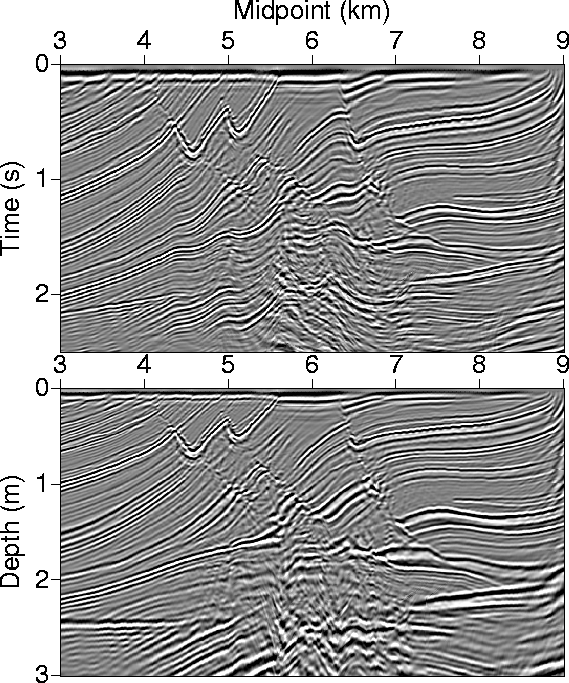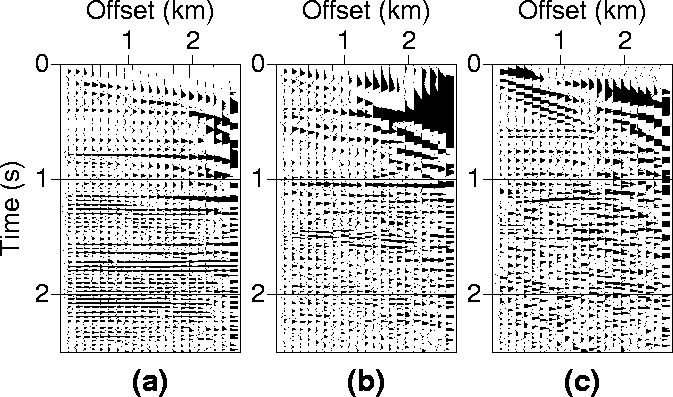Due to the complexity of the velocity model,
depth migration is often used to properly prestack migrate the Marmousi dataset. Time migration
typically yields poor images of the Marmousi model. However, using the traveltime maps obtained
from the (![]() )-domain ray tracing, good images of the Marmousi model are possible in time.
)-domain ray tracing, good images of the Marmousi model are possible in time.
 |
Figure 6 (top) shows stacked section after prestack time-migration. Overall, the migrated section seems well focused, and since the vertical axis is given in time, the position of the reflectors is affected by the velocity model. The reflectors appear more shaky under areas of complex velocity structure. The conversion of this data from time to depth will remove such artificial complexity. Figure 7 shows common CMP gathers after prestack time migration. Stacking such gathers produces for us the image shown in Figure 6 (top). At all times, the moveout is well aligned, ready to be stacked. Some misalignment appears at CMP location 5000 and 6000 m, but this is expected considering the complexity of the Marmousi Model. The confirmation of the accuracy of the migration will allow its use for velocity estimation, since non-alignment of the moveout cannot be blamed on the migration, and will be only attributed to velocity inaccuracies.
 |
Figure 6 (bottom) shows the stacked section after prestack time migration, but in depth rather than time. Using the Marmousi velocity model for the conversion has rendered more accurate reflector positioning than that in the time domain. In imaging the reservoir anticline, some fault-like breaks appeared in the depth image. This can be attributed to the complexity of the model directly above this region, which might have negatively affected the time-to-depth conversion. For prestack migration velocity analysis we have yet to see which domain (depth or time) will result in better convergence and stability. However, some preliminary indications favor the time domain Biondi et al. (1997), simply because horizontal reflectors are nearly stationary in such a domain, and moveout from horizontal reflectors provides the majority of the velocity information in the subsurface.